Archive
Possible mechanisms of central bank market manipulation
By Patrick A. Heller | Numismaster
On the basis of the hard information available early this week, it is highly likely that gold and silver prices were pushed down rather than fell as a result of free market trading.
First, it is entirely possible that European central banks of nations in the eurozone could be liquidating some of their gold reserves as a desperate move to beef up their fiat currency reserves to stave off default on their debts. If this is happening to any degree, that could help explain the why short-term gold and silver lease rates have recently turned negative.
Second, it is possible that the U.S. government may have informed the Chinese government in advance that is was preparing a major intervention to suppress gold and silver prices and asked the Chinese to refrain from jumping in to purchase physical metals until the market had been pushed near the bottom.
Last week a longtime reliable source told me that there were massive quantities of Asian buy orders placed in the London market to execute if spot prices dropped to $1,760 all the way down to $1,715. I have every reason to believe that at least a sizable percentage of these buy orders may be have placed by the Chinese government as this would be consistent with their trading activity since 2003. If the Chinese were alerted that they could have the opportunity to purchase gold even cheaper than their standing buy orders, it would be reasonable for them to cooperate by putting their buy orders prices in the $1,700s.
Third, it is possible that the U.S. government may have directly intervened in suppressing prices, through one or more agencies that are not drawing close scrutiny from Congress or the public. The prime suspect would be the Exchange Stabilization Fund, which was established in 1934. The ESF is an emergency reserve, not subject to congressional oversight, normally used to intervene (manipulate) in foreign exchange markets. In 1970, its mandate was changed by Congress to allow the Secretary of the Treasury, with the approval of the President, to use funds in the ESF to “deal in gold, foreign exchange and other instruments of credit and securities.” Thus, it would be possible and legal for the U.S. government to surreptitiously manipulate the gold market. The reason I consider this to be a plausible reason that gold and silver prices were suppressed is that the major beneficiaries of lower prices would be the U.S. government, its trading partners and allies.
On the basis of the hard information available early this week, it is highly likely that gold and silver prices were pushed down rather than fell as a result of free market trading. As I prepare this Tuesday morning, the price of gold is already up more than 7 percent from the bottom it touched in Asian markets early Monday, and silver is up more than 25 percent. Investor sentiment is not that volatile. You just don’t have gold and silver plummet then quickly rebound by such large amounts. However, manipulated markets can be that volatile.
LBMA 2011: Two Charts & An Opportunity
Submitted by: Adrian Ash | BullionVault
-
Plenty of reasons to be cautious were flagged up in today’s “Bubble or Not?” debate… LOTS MORE to share from the second and last day of this year’s LBMA Annual Conference here in Montreal. But the red-eye for London won’t wait, not with Air Canada cabin staff starting a strike at midnight.
Gold: China's Demand & Shortfall
So two quick charts, both highlighted by Edel Tully, precious metals strategist at UBS, in her conference summary. First, she said she’s adding this chart – hoisted from this morning’s opening presentation by Albert Cheng of the World Gold Council in the China & India session – to her slide deck:
It shows the yawning supply-demand gap inside China’s domestic gold market. Now the world No.1 for gold mining output four years running, China cannot satisfy its own private household demand.
Bigger picture, the chart makes a neat pairing with this slide, used by Franco-Nevada chairman Pierre Lassonde in Monday’s keynote speech – and already a key fixture in any analyst or strategist’s PowerPoint slides, according to Tully.
Plenty of reasons to be cautious on gold were flagged by this afternoon’s “Bubble or not?” debate. In particular, the risk of a parabolic rise – similar to how silver shot higher this spring – could see “safe haven” buyers scared off by volatility. (Silver investment flows have certainly turned “hesitant” since then, noted GFMS’s Philip Newman.)
Or maybe existing investors will soon begin tiring of year-on-year gains in gold, and start rotating into other asset classes instead of waiting for what they might forecast as a “top”. Or maybe a blow-up in China – sparked by its own domestic credit and real estate markets, if not central-bank action to try and cool them, along with inflation – could see its tug on the world’s gold supplies pushed the other way, as the feel-good affinity for gold is reversed by economic slowdown or even recession.
Gold: 1% of the world's financial assets today
But for now, as one panellist put it in the Oxford-style debate – and with gold investment accounting for just 1% of the world’s financial assets today – “This looks less like a bubble than an opportunity.”
Related News:
-
Formerly City correspondent for The Daily Reckoning in London and head of editorial at the UK’s leading financial advisory for private investors, Adrian Ash is head of research at BullionVault – winner of the Queen’s Award for Enterprise Innovation, 2009 and now backed by the World Gold Council market-development and research body – where you can buy gold today vaulted in Zurich on $3 spreads and 0.8% dealing fees.
-
China knows about gold price suppression, and U.S. knows China knows
By Chris Powell | GATA
-
China knows that the U.S. government and its allies in Western Europe strive to suppress the price of gold, and the U.S. government knows that China knows, according to a 2009 cable from the U.S. Embassy in Beijing to the State Department in Washington.
The cable, published in the latest batch of U.S. State Department cables obtained by Wikileaks, summarizes several commentaries in Chinese news media on April 28, 2009. One of those commentaries is attributed to the Chinese newspaper Shijie Xinwenbao (World News Journal), published by the Chinese government’s foreign radio service, China Radio International. The cable’s summary reads:
According to China’s National Foreign Exchanges Administration, China’s gold reserves have recently increased. Currently, the majority of its gold reserves have been located in the United States and European countries. The U.S. and Europe have always suppressed the rising price of gold. They intend to weaken gold’s function as an international reserve currency. They don’t want to see other countries turning to gold reserves instead of the U.S. dollar or euro. Therefore, suppressing the price of gold is very beneficial for the U.S. in maintaining the U.S. dollar’s role as the international reserve currency. China’s increased gold reserves will thus act as a model and lead other countries toward reserving more gold. Large gold reserves are also beneficial in promoting the internationalization of the renminbi.
It’s hard to believe that, two years later, China is still leaving so much of its gold with the Federal Reserve Bank of New York and the Bank of England when even little Venezuela has publicly figured out the gold price suppression component of the Western fractional reserve banking system and is attempting to repatriate its gold from the Bank of England and various Western bullion banks:http://www.gata.org/node/10281
http://www.gata.org/node/10286
It is already a matter of record that China dissembled about its gold reserves for the six years prior to the public recalculation of its gold reserves in April 2009 that prompted the commentary in Shijie Xinwenbao. At that time China announced that its gold reserves were not the 600 tonnes it had been reporting each year for the previous six years but rather 76 percent more, 1,054 tonnes:
ZeroHedge, which seems to have broken the story of the Beijing embassy cable this evening, comments:
Wondering why gold at $1,850 is cheap, or why gold at double that price will also be cheap, or, frankly, at any price? Because, as the following leaked cable explains, gold is, to China at least, nothing but the opportunity cost of destroying the dollar’s reserve status. Putting that into dollar terms is, therefore, impractical at best and illogical at worst. We have a suspicion that the following cable from the U.S. embassy in China is about to go not viral but very much global, and prompt all those mutual fund managers who are on the golden sidelines to dip a toe in the 24-karat pool.
The ZeroHedge commentary can be found here:
http://www.zerohedge.com/news/wikileaks-discloses-reasons-behind-chinas-…
In addition to fund managers throughout the world, this cable may be of special interest to the gold bears CPM Group Managing Director Jeff Christian, who says he consults with most central banks and that they hardly ever think about gold, and Kitco senior analyst Jon Nadler, who insists that central banks have no interest whatsover in manipulating the gold price.
In fact, of course, gold remains the secret knowledge of the financial universe, and its price is actually the determinant of every other price and value in the world.
The Beijing embassy cable can be found here:
http://cables.mrkva.eu/cable.php?id=204405
And, just in case, at GATA’s Internet site here:
http://www.gata.org/files/USEmbassyBeijingCable-04-28-2011.txt
CHRIS POWELL, Secretary/Treasurer
Gold Anti-Trust Action Committee Inc.
-
Updated: Sep 6, 2011
Another more recent cable released through Wikileaks provide even more damning evidence of US using gold as the “weapon of choice” in their currency war with China. Gold is the Political Metal.
This time the quick change of the U.S. policy (toward China) has surprised quite a few people. The U.S. has almost used all deterring means, besides military means, against China. China must be clear on discovering what the U.S. goals are behind its tough stances against China. In fact, a fierce competition between the currencies of big countries has just started. A crucial move for the U.S. is to shift its crisis to other countries – by coercing China to buy U.S. treasury bonds with foreign exchange reserves and doing everything possible to prevent China’s foreign reserve from buying gold. The nature of such behavior is a rogue lawyer’s behavior of ‘ripping off both sides’: taking advantage of cross-strait divergences, blackmailing the Taiwan people’s wealth by selling arms to Taiwan, and meanwhile coercing China to buy U.S. treasury bonds with foreign exchange reserves and extorting wealth from the mainland’s people. If we [China] use all of our foreign exchange reserves to buy U.S. Treasury bonds, then when someday the U.S. Federal Reserve suddenly announces that the original ten old U.S. dollars are now worth only one new U.S. dollar, and the new U.S. dollar is pegged to the gold – we will be dumbfounded. Today when the United States is determined to beggar thy neighbor, shifting its crisis to China, the Chinese must be very clear what the key to victory is. It is by no means to use new foreign exchange reserves to buy U.S. Treasury bonds. The issues of Taiwan, Tibet, Xinjiang, trade and so on are all false tricks, while forcing China to buy U.S. bonds is the U.S.’s real intention.”




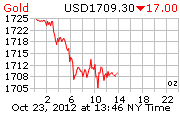
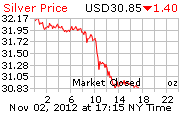
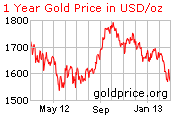
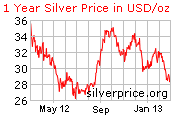
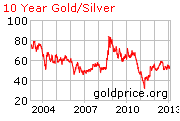
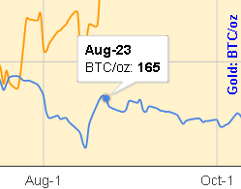
Silver is Oversold “It’s a License to Steal”
-
Here are two great interviews discussing the reasons & implications of the recent price action of gold & silver.
-
Sean (SGT Report) discusses the recent silver price take-down with David Schectman.
-
Al Korelin (Korelin Economics Report) discusses the recent silver price take-down with David Morgan. Some key points:
Share this:
Like this: